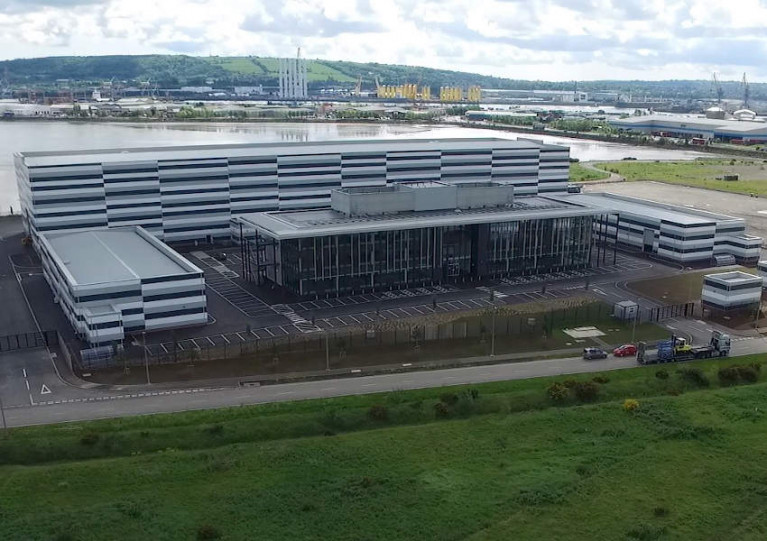Displaying items by tag: Belfast Harbour Studios
Belfast Harbour has submitted a planning application for the development of six new purpose-built film and television studios at its existing Giant’s Park site.
The harbour company says the plans represent an investment of £45m and will generate 250 construction jobs and around 1,000 creative industry jobs.
The proposed development would quadruple the size of the Belfast Harbour Studios complex and make Belfast a leading centre in the industry, the company says.
Phase one of the Belfast Harbour Studios development opened three years ago at Giant’s Park on Belfast Lough with two 32,000 sq ft studios and 125,000 sq ft of overall production space.
These have been used for a number of major productions including SyFy’s Krypton TV series and are currently occupied by a major film production company.
Belfast Harbour now intends to develop four additional 21,000 sq ft studios and two 16,000 sq ft studios, as well as up to 100,000 sq ft of production offices and 130,000 sq ft of support workshops on an adjoining 20-acre site.
In total, the project represents more than 346,000 sq ft of additional production facilities which, when combined with phase one, will create the largest studio complex outside of the South East of England.
Located on Belfast’s Giant’s Park on the North Foreshore, the expanded facility will also provide flexible backlot areas and dedicated support space for specialised creative suppliers to the industry, and aligns with Belfast Harbour’s ambitions to create a leading European media hub.
Joe O’Neill, Belfast Harbour’s CEO, said: “In recent years Belfast has established itself as one of the UK’s top media production hubs. In 2017 we invested £20m to provide brand-new studio facilities but with record levels of demand for studio space globally, we are confident the time is right to progress with phase two of the development.
“The location is highly accessible, is serviced by ultra-high-speed internet connections and benefits from a skilled local workforce that has proven its ability to help deliver some of the world’s best film and television content.
“This new studio complex will build on Northern Ireland’s already impressive international reputation and generate around 1,000 creative industry jobs across a wide variety of disciplines.”
Upon receipt of planning, Belfast Harbour would start construction on phase two later this year with completion of the new studios scheduled for 2021.
Richard Williams, CEO of Northern Ireland Screen, said the expansion would provide a significant further boost for the local industry at a time when studio space is at a premium across the UK.
“With Disney and Apple joining Netflix and Amazon in investing in the launch of their own on-demand streaming services, there is no end in sight to the demand for high-end, high-cost content. That has led to unprecedented demand for studio space globally, so Belfast Harbour’s announcement comes at a perfect time for our local industry,” he said.
“Belfast Harbour’s support for the screen industries in Northern Ireland is exemplary, and their vision for phase two of Belfast Harbour Studios is inspired. It is a development that will help Northern Ireland to become the largest screen sector in the UK and Ireland outside of the southeast of England.”
Spending on film and high-end television in the UK from major international productions topped £3.04bn in 2019, according to figures released by British Film Institute’s research and statistics unit.





























































